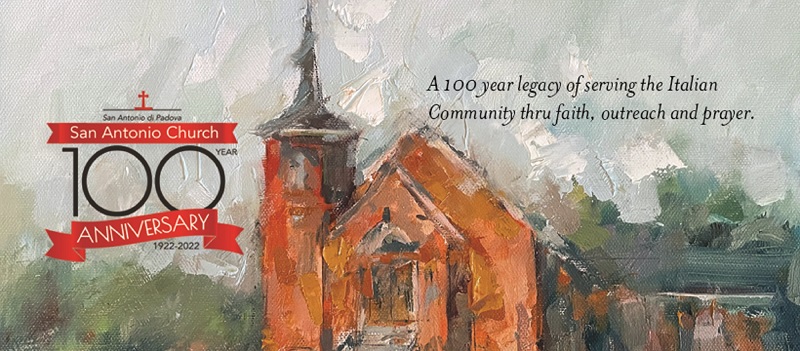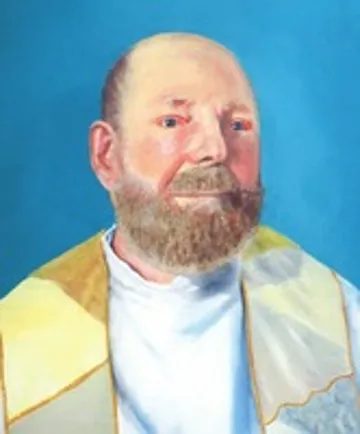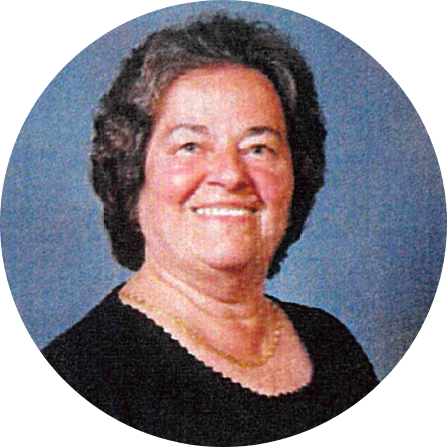We would like to thank everyone who has continued to contribute to the ongoing expenses of San Antonio Church by mailing in their weekly envelopes or by contributing electronically utilizing WeShare . The buttons at the bottom of this post allow you to make online donations directly to the listed account for San Antonio Church.
Weekly Bulletin August 4, 2024
by Terrie Evans
On this 18th Sunday of Ordinary Time, we continue to pray for the Canonization of Sr. Blandina Segale, Servant of God and all the needs of the parishioners of San Antonio Church. On Monday, August 5th, the Catholic Church celebrates the Dedication of Saint Mary Major Basilica, rebuilt from the medieval fourth century Liberian Basilica by Pope Sixtus III. In 431, it was rebuilt shortly after the Council of Ephesus to establish Mary’s title as the Mother of God becoming the largest church in the world honoring God through Mary. It is one of the four Roman Basilicas known as Patriarchal Churches in memory of the first centers of the Church. St. John Lateran represents Rome, and the See of St. Peter; St. Paul Outside the Walls, the See of Alexandria presided over by Mark; St. Peter is, the See of Constantinople; and St. Mary’s within the See of Antioch where Mary spent her later life. Another name for this feast is Our Lady of the Snows from the legend of a wealthy Roman couple who pledged all of their fortune in honor of the Mother of God. On August 5th, during a hot Roman Summer, snow fell on the summit of Esquiline Hill, following a vision of the Virgin Mary the couple had the same night, they built a Basilica in honor of Mary on the exact site of the snowfall. The 15th Century legend is shown in the painting of the Miracle of the Snow by artist, Masolino da Panicale around 1423, now displayed in the Museum of Capodimonte in Naples. The miracle of the snow is depicted with a crowd of men and women witnessing Jesus and Mary watching from Heaven. In the following Centuries, many churches were dedicated to Our Lady of the Snows with 152 still in existence. Every year on August 5th during the Liturgical Feast of the Dedication of the Basilica of Saint Mary Major, a shower of white rose petals will be dropped from the ceiling at the conclusion of the Solemn Mass. The United States has a National Shrine of Our Lady of the Snows in Belleville, Illinois along with parishes dedicated to Our Lady of the Snows located in Clarks Summit, Pennsylvania, Reno, Nevada, Floral Park, New York, Milford, Michigan and Woodstock, Vermont.
On Tuesday, August 6th, we honor the feast of the Transfiguration of the Lord which became widespread in the West around the 11th Century. The feast was introduced into the Roman Calendar in 1457 and was celebrated earlier within the rites of the Syrian, Byzantine, and Coptic Churches. It foretells the glory of the Lord as God and his Ascension into heaven when the divine glory of Christ was shown in a comprehensive way to the Apostles Peter, James, and John. The Transfiguration takes place before three witnesses, Peter, James, John, chosen by Jesus as a change in His outward appearance takes place. Jesus’ face and clothes became surrounded by light when Moses and Elijah appear who speak, “Of His departure, which he was to accomplish at Jerusalem.” A cloud floats over Him and a voice from heaven says, “This is my Son, my Chosen; listen to him”! This feast anticipates the glory of heaven, where we shall see God face to face. Through grace, we already have shared in the divine promise of eternal life. The Church of the Transfiguration is located on Mount Tabor in Israel and the Altar of Transfiguration can be seen in St. Peter’s Basilica. In the Russian Orthodox Church, honey, pears, apples, plums, and other fruits are brought to the church for a blessing and in the Roman Ritual, the Transfiguration is considered a Harvest Feast with blessings said for the crops of wheat and grapes. The Transfiguration is the Patron of Borgomasino, Italy and of pork butchers. A Prayer on the Feast of the Transfiguration: “O, God, who in the glorious Transfiguration of your Only Begotten Son confirmed the mysteries of faith by the witness of the Fathers and wonderfully prefigured our full adoption to sonship, grant, we pray, to your servants, that, listening to the voice of your beloved Son, we may merit to become co-heirs with him. Who lives and reigns with you in the unity of the Holy Spirit, God, for ever and ever. AMEN.”
On Wednesday, August 7th we honor the Feast of Pope Sixtus II, one of the most highly esteemed martyrs of the early Roman Church. He was the Bishop of Rome from 257-258 who was killed along with 7 Deacons during the persecutions of Christians by the Emperor Valerian. He was a Greek Philosopher who embraced the Christian Faith when Emperor Valerian set the decree to condemn Christianity in 257. He then ordered those farms, the estates, all the goods, all the freedoms and all the lives of those who refused to renounce their faith should then be sacrificed. Pope Sixtus II hid out in the catacombs on the Appian Way, one of the most important Roman Roads of the ancient republic. He was discovered preaching to his flock and while he was still seated, Pope Sixtus II was beheaded along with 7 other Deacons, also martyred. Their bodies were carried across the Appian Way by their mourners with Pope Sixtus II remains transferred to the Papal Crypt in the Cemetery of St. Callistus. The enshrined bloodstained chair on which Pope Sixtus II was beheaded now sits behind his tomb. Pope Damasus I placed the following inscription on his tomb in the catacomb of Callixtus: “At the time when the sword pierced the bowels of the Mother, I buried here, taught as Pastor the word of God; when suddenly, the soldiers rushed in and dragged me from the chair. The faithful offered their necks to the sword, but as soon as the Pastor saw the ones who wished to rob him of the palm (martyrdom) he was the first to offer himself and his own head, not tolerating that the (pagan) frenzy should harm the others. Christ, who gives recompense, made manifest the Pastor’s merit, preserving unharmed the flock.”
On Wednesday, August 7th we also celebrate the feast of St. Cajetan born Gaetano dei Conti di Thiene (1480-1547), an Italian Catholic Priest, religious reformer, co-founder of the Theatines, the Congregation of Clerics Regular in the city of Abruzzo. He studied law in Padua and received his Doctor Utriusque Juris in Civil and Canon Law at the age of 24 and in 1506, Cajetan began his work as a Diplomat for Pope Julius II, reconciling the Republic of Venice. When the Pope died in 1513, he felt his work was completed leaving the papal court after the death of his mother. He was ordained a priest in 1516 and with his interests changing, in 1522, he founded a hospital for incurables in Vicenza and in 1523 established a hospital in Venice. He became more devoted to spiritual healing and joined an Association of the Faithful (Confraternity) in Rome, called the Oratory of Divine Love. By 1524, Cajetan wished to form a group that would combine the spirit of Monasticism, withdrawing from society in order to devote themselves totally to God through prayer, penance, and solitude while being in an active ministry. The new order, Theatines, was founded by St. Cajetan (Gaetano dei Conti di Thiene) Paolo Consiglieri, Bonifacio da Colle, and Giovanni Pietro Carafa later, Pope Paul IV. The founding of the Order took place on the feast of the Finding of the Holy Cross on May 3, 1524, which was adopted as its emblem. Pope Clement VII approved the Order on June 4, 1524. On September 14, 1524, on the Feast of the Exaltation of the Holy Cross, Cajetan and his companions made their solemn profession before the Papal Altar of St. Peter’s Basilica in Rome. They founded their oratories, religious communities devoting themselves to preaching the Gospel, reforming lax morals while establishing hospitals while donning the simple black cassock and maintaining a modest lifestyle. The Theatines were the first order to found Papal Missions in India, Burma, Peru, the East Indies and in 1626, they were established in Persia. The Order grew slowly and by 1700, the Theatines numbered 1400. They founded the Sant’ Andrea della Valle in Rome, in France, they built the Church of St. Anne la Royale in 1644 located across from the Louvre. And in Bavaria, the Theatine Church, St. Kajetan was built between 1663-1690. In 1691, Eusebio Kino, a Jesuit Missionary, established the Arizona Mission San Cayetano de Tumacacori in his honor, now the Tumacacori National Historical Park. Cajetan died in Naples, Italy on August 7, 1547, with his remains placed in the Church of San Paolo Maggiore in Naples and was Beatified on October 8, 1629, by Pope Urban VIII at St. Peter’s Basilica. On April 12, 1671, he was Canonized by Pope Clement X at St. Peter’s Basilica and is the Patron saint of Argentina, the unemployed and good fortune. The Theatines are present in Argentina, Brazil, Colombia, Mexico, the Netherlands, Spain, and in the United States of America where a mission is located at Durango, Colorado. The Theatine Order furnished one Pope, 250 Bishops, Archbishops, Papal Legates and several Cardinals and the Astronomer, Giuseppe Piazzi (1746-1826) became a Theatine at the age of 19. He was a professor of mathematics and astronomy in Palmero, Sicily and discovered the first asteroid, Ceres in 1801. As of 2020, the Theatine Order had 124 Priests out of their total of 161 members.
On Thursday, August 8th we honor St. Dominic, born in 1170 in Spain, and ordained at a time when people were leaving the church to follow false teachings. He became a Cathedral Canon at the age of 26 was chosen by his Bishop to bring Christians back into the fold. He witnessed those heretics living fine lives believing that whatever their bodies did had no relevance to the state of their souls. Dominic was chosen by his Bishop to visit southern France to bring Christians back into the fold. Dominic stayed in France to devote his life to preaching the word before going to Rome with the goal of establishing a religious order that would preach, teach, and promote the truth calling it the Order of Preachers or the Dominicans. When he became discouraged with his work, Our Lady appeared to him asking him to pray the Rosary daily and teach the rosary to those heretics. He also founded a convnet for nuns with the mission to care for young girls. He died in 1221 and was Canonized in 1234 by Pope Gregory IX and is the Patron of Astronomers. A Prayer to St. Dominic: “O, God, let St. Dominic help Your Church by his merits and teaching. May he who was an outstanding preacher of truth became a most generous intercessor for us. AMEN.”
On Friday, August 9th, we honor the feast of St. Teresa Benedicta, born Edith Stein on Yom Kippur in 1891, the youngest child of a large Jewish Family living in Poland. She did not practice her religion during her teen years and when WWI broke out, she studied to become a Red Cross nurse working in an infectious disease hospital. In 1916, Edith attended the University of Friedburg, obtaining an assistantship to Edmund Husserl after completing her Doctoral Thesis,” The Empathy Problem as it Developed Historically and Considered Phenomenologically”. In her role as an assistant, she gave her opinion on important issues and made different independent contributions to phenomenology, the study of phenomenology (pertaining to life experiences). Soon, she was drawn to the Christian Faith after reading the life of St. Teresa of Avila of the Carmelite Order and in 1922, Edith was Baptized into the Catholic Church hoping to become a Discalced Carmelite Nun. She chose instead to teach at a Catholic School in Speyer, until the Nazi Government made her quit the job she loved in 1933, due to the Law for the Restoration of the Professional Civil Service. Edith was then admitted as a postulant in the Discalced Carmelite Monastery on the feast day of St. Teresa of Avila. In 1934, she received the religious habit of a Novice while spurning shoes in place of sandals, a practice that is said to have started with St. Francis of Assisi and St. Clare. Edith took the name Teresa Benedicta of the Cross making her temporary vows on April 21,1935 and three years later, on April 21,1938, she took her perpetual vows with the promise, “Henceforth, my only vocation will be to love”. After taking the name Teresa Benedicta of the Cross, she wrote in 1938: “Beneath the Cross, I understand the destiny of God’s people. Indeed today, I know for better what it means to be the Lord’s bride under the sign of the Cross.” With the growing Nazi threat, Teresa, along with her biological sister Rosa, also a nun, were sent to the Carmelite Monastery in Echt, Netherlands on New Years Eve, 1939 for their safety. On June 9, 1939, she professed her spiritual statement: “Even now I accept the death that God has prepared for me in complete submission and with joy as being his most holy will for me. I ask the Lord to accept my life and my death so that the Lord will be accepted by His people and that His Kingdom may come in glory, for the salvation of Germany and the peace of the world.” Teresa and Rosa both worked to oversee all of the needs of the monastery and also the community’s needs as well. While in the Netherlands she wrote Studie uber Joannes a Cruce: Kreuzeswissenschaft (Studies on John of the Cross). After the Nazi’s occupied the Netherlands, all those Baptized Catholics of Jewish origin were arrested by the Gestapo on the flowing Sunday, August 2, 1942. She was arrested along with her sister Rosa by the Gestapo while they were praying in the Chapel. There were 244 people arrested and sent to Auschwitz concentration camp and on August 9, 1942, were murdered in the Birkenau gas chambers, Teresa Benedicta of the Cross was 50 years old. She was Beatified on May 1, 1987, in Cologne Germany by Pope John Paul II and Canonized on October 11, 1998, in Vatican City by Pope John Paul II. She is one of the six patron saints of Europe along with Benedict of Nursia, Cyril and Methodius, Bridget of Sweden, and Catherin of Siena. In 1998, Edith Stein, was pictured on a German postage stamp along with Jesuit, Rupert Mayer in honor of their Beatification and in 2014, on the 70th Anniversary of D Day, a Bell was dedicated to St. Teresa Benedicta of the Cross at Bayeux Cathedral by Prince Charles. In Breslau, Poland, a museum, the Edith Stein House is dedicated to the history of the Saint and the Stein Family.
On Saturday, August 10th we celebrate the life and works of St. Lawrence, Deacon, and Martyr (225-258) Lawrence was the first of seven deacons who served the Roman Church under Pope Saint Sixtus II. As a deacon in Rome, Lawrence was in charge of all materials of the Church and with the distribution of alms for those in need. When Pope Saint Sixtus II was put to death, Lawrence knew he would be arrested and suffer the same fate. He sought out those widows, orphans, the elderly, and the poor in Rome, giving them any money he had, even selling the sacred vessels of the Church. When the perfect of Rome heard of his plans, he assumed the Church had considerable treasures and summoned Lawrence saying: “You Christians say we are cruel to you, but that is not what I have in mind. I am told that you priests offer in gold, that the sacred blood is received in silver cups, that you have golden candlesticks at your evening services. Now, your doctrine says you must render to Caesar what is his. Bring these gold and silver treasures-the emperor needs them to maintain his forces. God does not cause money to be counted, He brought none of it into the world with him-only words. Give me the money, therefore, and be rich in words,” Lawrence replied that the Church was rich, “I will show you a valuable part. But give me time to set everything in order and make an inventory.” After three days he gathered a great number of lames, maimed, leprous, orphaned, and widowed persons and arranged them in rows. When the prefect arrived for his bounty, Lawrence said, “These are the treasures of the Church.” Lawrence was then arrested and put over a gridiron to suffer a slow painful death. Before he died, Lawrence prayed for the conversion of Rome. He died in 258 with the church built over his tomb becoming one of the seven principal churches of Rome and a favorite for pilgrimages. He was canonized pre congregation and is the patron saint of cooks, deacons, librarians, restauranteurs, seminarians, and wine makers. A Prayer to St. Lawrence: “O God, by his ardent love for You St. Lawrence exhibited faithful service and attained a glorious martyrdom. Help us to love what he loved and to practice what he taught. AMEN.”
Our San Antonio Church Community sends condolences and prayers to the Siciliano Family on the passing of Dan Siciliano beloved husband, father, son, brother, and friend. His funeral Mass was held at St. Joseph Parish, North Bend Ohio on Friday, August 2, 2024. He was from the Siciliano Family whose homestead was located on Queen City Avenue near the old Movie Theatre. Dan attended school at St. Bonnie’s and even though their family moved to the Bridgetown area, the Siciliano Family always supported the fundraisers at San Antonio Church. Dan also attended the yearly “Mussie Fest” held in our hall. Please keep Dan’s extended family and friends in your prayers.









